Anemia poses a common risk to individuals as they age, particularly among women. However, it’s noteworthy that anemia is still prevalent among children aged 6 to 59 months. According to World Health Organization data, more than 269 million children have been affected by this condition. Hence, it’s crucial to emphasize that dietary adjustments can play a significant role in reducing and managing anemia in certain cases. Adopting a well-rounded and nourishing diet is essential for preventing anemia.
Follow our article “What to Eat for Anemia” to answer this question. Here’s a breakdown of the top foods to include and avoid in your anemia diet, along with guidance on meal planning and preparation. Additionally, it’s essential to understand the timeline for seeing improvements in your condition.
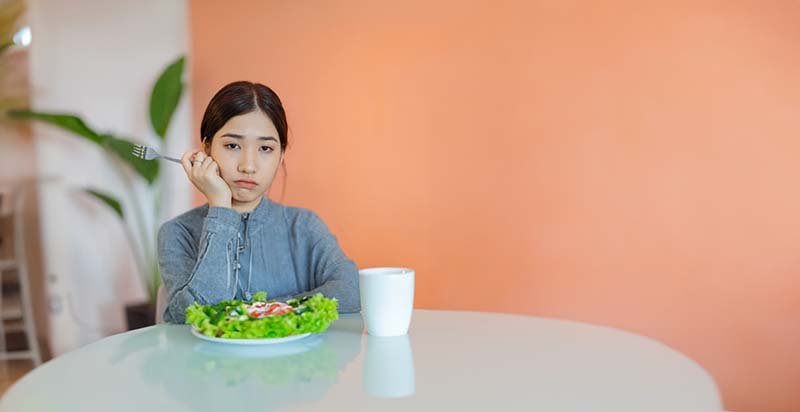
1. What To Eat For Anemia: 4 Important Food Groups
1.1 Foods Rich in Protein
Protein plays a vital role in overall health and supports the production of red blood cells, making it essential for treating anemia. Including a variety of protein sources in your diet can aid in anemia treatment.
- Animal proteins such as meat, poultry, fish, and dairy are excellent sources of heme iron and vitamin B12, crucial for addressing anemia.
- Plant-based proteins like legumes, nuts, seeds, and tofu provide non-heme iron and other nutrients beneficial for individuals with anemia.
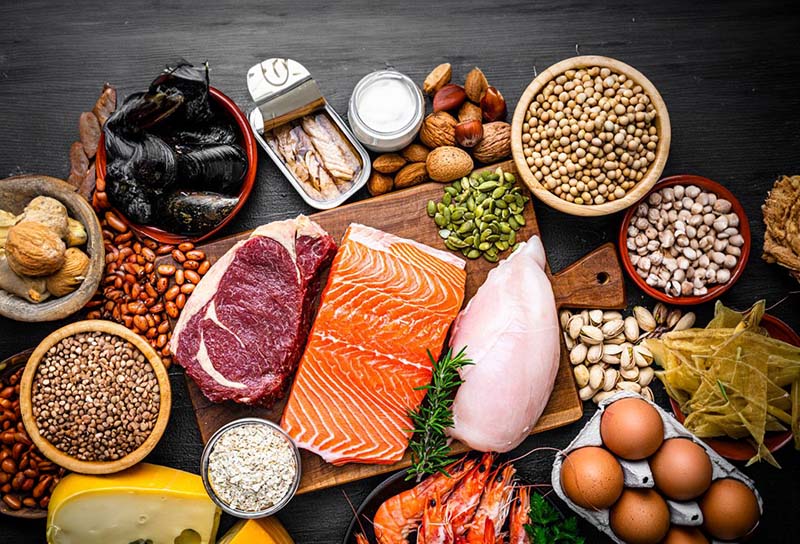
1.2 Foods Rich in Iron
Iron-rich foods are paramount for treating iron-deficiency anemia as this mineral stimulates the production of red blood cells.
- Heme iron, sourced from animal-based foods like meat, chicken, fish, liver, eggs, and seafood, is generally better absorbed by the body.
- Non-heme iron is found in iron-fortified foods, fruits, vegetables, beans, nuts, eggplant, and leafy greens. Including these foods in your daily diet, ideally with a vitamin C source such as oranges, pineapples, strawberries, kiwis, or tangerines, can enhance iron absorption.
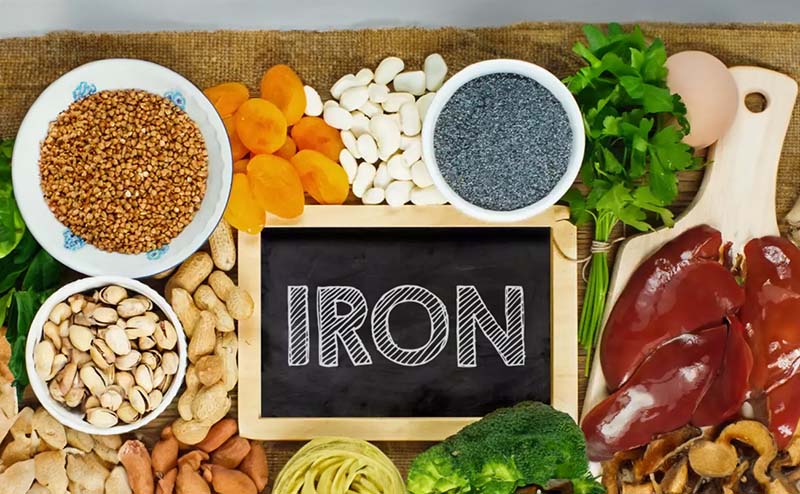
1.3 Foods Rich in Folic Acid
Folic acid, or vitamin B9, is essential for stimulating red blood cell production and ensuring the correct formation of hemoglobin, responsible for transporting oxygen from red blood cells to the tissues.
- Folate-rich foods include dark leafy greens, legumes, nuts, and fortified foods.
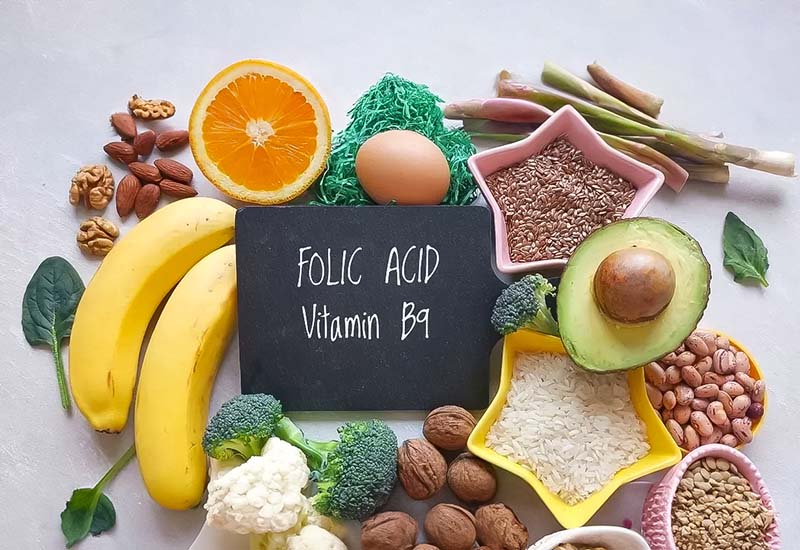
1.4 Foods Rich in Vitamin B12
A deficiency in vitamin B12 can lead to megaloblastic anemia, characterized by larger red blood cells and decreased white blood cells and platelets. Regularly consuming foods rich in vitamin B12 can prevent this type of anemia.
- Sources of vitamin B12 include organ meat, eggs, milk, and dairy products.
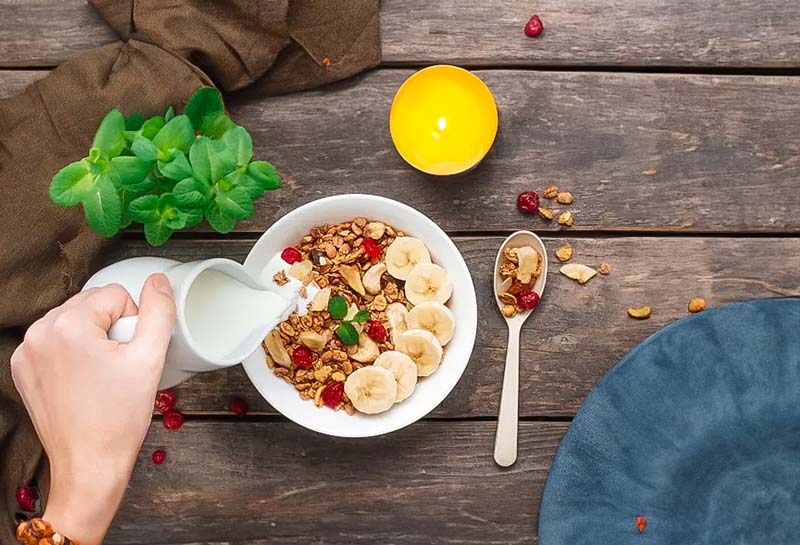
Notes:
- Combining iron-rich foods with sources of vitamin C enhances iron absorption.
- Ensure a balanced intake of both animal and plant-based proteins for comprehensive nutritional support.
- Cooking in cast iron cookware can help increase iron intake, particularly from non-heme sources.
2. 15+ Best Foods for People With Anemia
Anemia, a condition marked by insufficient red blood cells, can often be managed and sometimes improved through dietary adjustments. Individuals with anemia are typically advised to incorporate foods rich in iron, vitamin B12, folate, and vitamin C into their diets. These nutrients aid in boosting red blood cell production and enhancing iron absorption. Here’s a roundup of some top foods to include in an anemia-friendly diet:
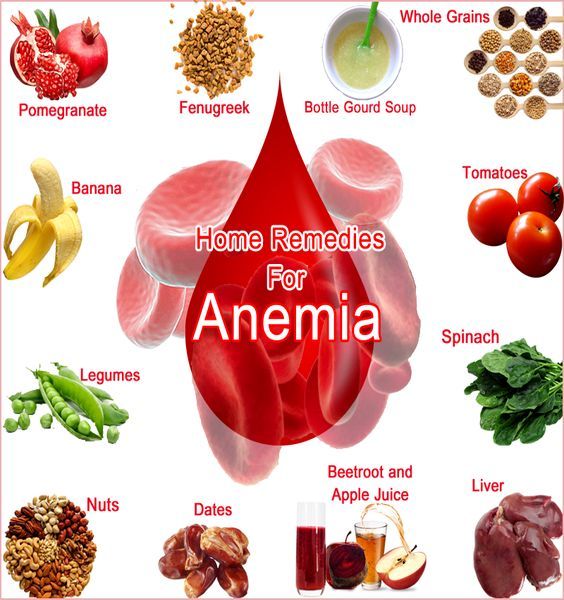
- Leafy Green Vegetables: Spinach, kale, and Swiss chard offer non-heme iron, crucial for plant-based iron intake, along with folate, essential for red blood cell production.
- Red Meat: Beef and lamb provide heme iron, easily absorbed by the body, and are also rich in vitamin B12.
- Poultry and Fish: Chicken, turkey, salmon, and tuna are good sources of both heme iron and vitamin B12.
- Legumes: Beans, lentils, chickpeas, and peas are packed with non-heme iron and folate, plus they’re excellent sources of protein.
- Nuts and Seeds: Pumpkin, sesame, hemp seeds, almonds, and cashews offer non-heme iron and other nutrients vital for those managing anemia.
- Iron-Fortified Cereals: Many breakfast cereals are fortified with iron, making them a convenient option for boosting iron levels.
- Eggs: Rich in iron, protein, and vitamin B12, eggs are a versatile addition to an anemia-friendly diet.
- Whole Grains: Quinoa, brown rice, and oatmeal provide non-heme iron and other essential nutrients supporting red blood cell health.
- Dried Fruits: Apricots, prunes, and raisins are iron-rich snacks beneficial for individuals with anemia.
- Citrus Fruits: Oranges, lemons, and grapefruits are high in vitamin C, which enhances iron absorption when consumed alongside iron-rich foods.
- Tomatoes: Rich in vitamin C and lycopene, tomatoes support iron absorption.
- Shellfish: Clams, oysters, and mussels are abundant sources of heme iron, ideal for increasing iron levels.
- Broccoli: This vegetable is not only high in iron and vitamin C but also provides fiber and vitamin K.
- Beetroot: High in iron and folic acid, beetroot is beneficial for managing anemia.
- Tofu: A plant-based source of iron, calcium, and protein, tofu is particularly useful for vegetarians and vegans.
- Dark Chocolate: Enjoyed in moderation, dark chocolate can contribute to iron intake and provides antioxidants.
3. Suggested Dishes for People With Anemia
For individuals managing anemia, prioritizing iron-rich meals and foods that aid in iron absorption is crucial. However, it’s also essential to be aware of items that can inhibit iron absorption to ensure optimal nutrient intake.
Here are some nutritious meal ideas tailored for individuals with anemia:
Breakfast Options:
- Oatmeal topped with fruits and seeds.
- Egg toast paired with a glass of orange juice.
- Banana smoothie blended with milk and yogurt, served with oatmeal and raisins.
- Breakfast hash comprising chickpeas, chicken sausage, mushrooms, sweet potatoes, and spinach.
Lunch Options:
- Chicken salad featuring lettuce, grapes, and whole wheat crackers.
- Beans served on a whole wheat bun, accompanied by baked sweet potato fries and a mixed green salad.
- Grilled cheese sandwich made with whole wheat bread, served with tomato soup, carrot sticks, and an orange.
Dinner Options:
- Tofu salad accompanied by spinach soup.
- Lamb chops served with boiled potatoes, steamed broccoli, and curly kale.
- A hearty stew made with kidney beans, chickpeas, black-eyed peas, tinned tomatoes, onions, red peppers, and garlic.
- Vegetable salad paired with two roti (Indian flatbread) and lentils.
Notes:
- Including vitamin C-rich foods such as orange juice, tomatoes, and leafy greens with iron-rich meals can enhance iron absorption.
- Maintaining a varied diet rich in both heme and non-heme iron sources ensures comprehensive nutritional support for individuals with anemia.
4. What to Eat for Anemia: Notes on Food Consumption for People With Anemia
Indeed, there’s no single food that can cure anemia. However, adopting a nutritious diet abundant in iron-rich foods can effectively aid in managing the condition.
When adhering to an anemia-focused diet, it’s important to observe a few guidelines:
- Avoid Pairing Iron-Rich Foods with Inhibitors: Refrain from consuming iron-rich foods alongside items that can hinder iron absorption, such as tea, coffee, eggs, and foods high in calcium and oxalates.
- Pair Iron-Rich Foods with Vitamin C Sources: Incorporate iron-rich foods into meals alongside sources of vitamin C, like tomatoes, oranges, or raspberries. Vitamin C enhances the body’s absorption of iron.
- Combine Iron-Rich Foods with Beta Carotene Sources: Integrate foods rich in iron with those containing beta carotene, such as red peppers, apricots, or beets. Beta carotene supports iron absorption.
- Include Both Types of Iron: Actively include foods containing both heme and non-heme iron in your daily diet to boost iron levels effectively.
- Incorporate Vitamin B12 and Folate-Rich Foods: Support the body’s production of red blood cells by adding foods rich in vitamin B12 and folate to your diet.
Notes:
- Regularly consuming fermented foods like yogurt or kefir can enhance gut health, aiding in nutrient absorption, including iron.
- Avoid excessive consumption of foods high in oxalates, such as spinach and almonds, as they can inhibit iron absorption.
5. Conclusion
In conclusion, understanding what to eat for anemia is pivotal for effectively managing this condition. By incorporating iron-rich foods, along with sources of vitamin C, beta carotene, vitamin B12, and folate, individuals can support their body’s red blood cell production and iron absorption. We encourage you to share your own experiences and feedback on how dietary changes have impacted your journey with anemia.
For more insightful articles on health and nutrition, including further guidance on what to eat for anemia, be sure to explore additional blogs from Biosculpture. Your health and well-being are our top priorities, and we’re here to support you every step of the way.


